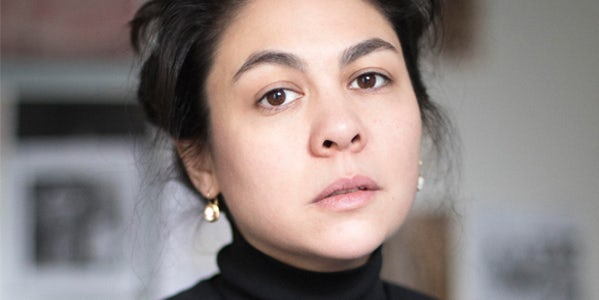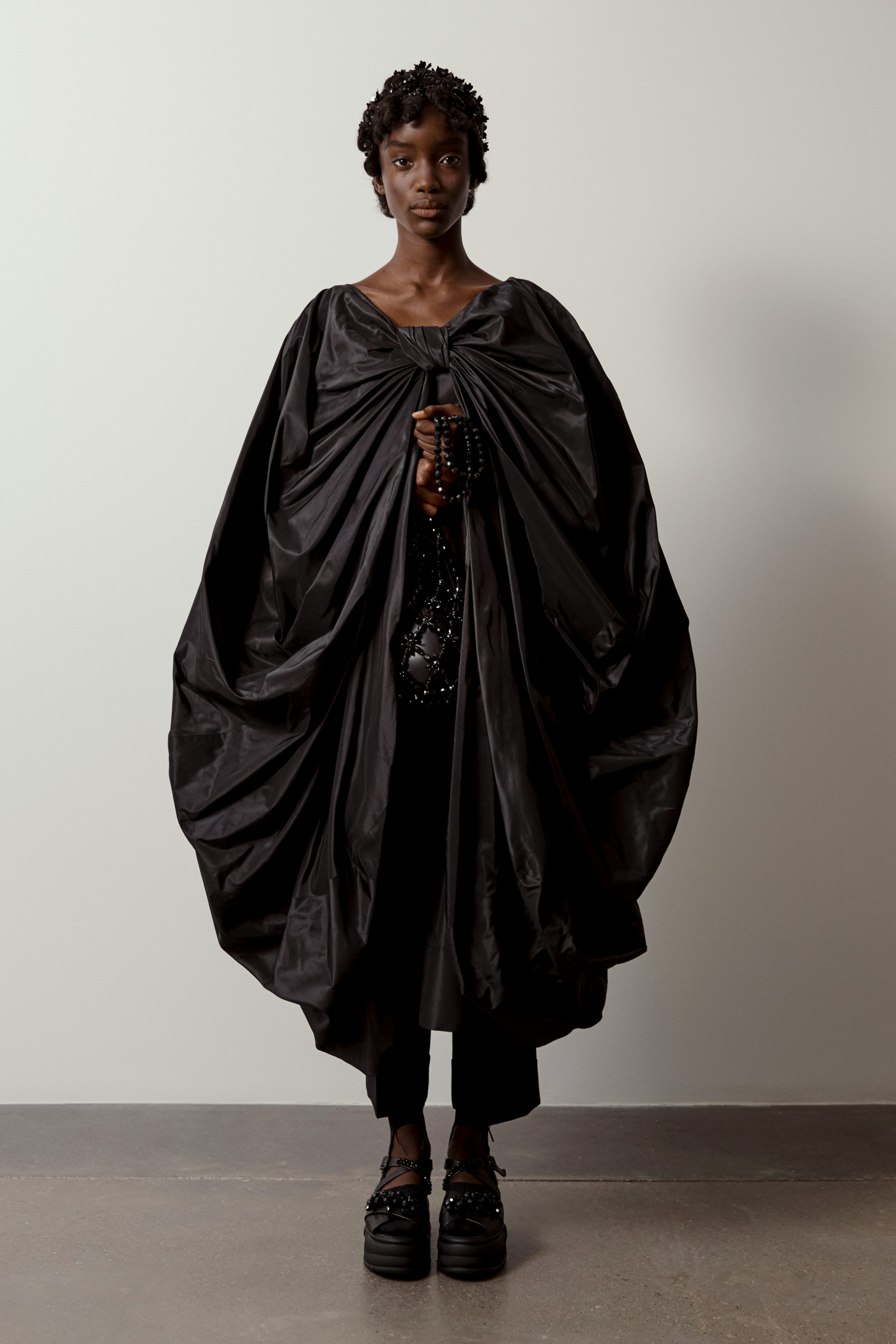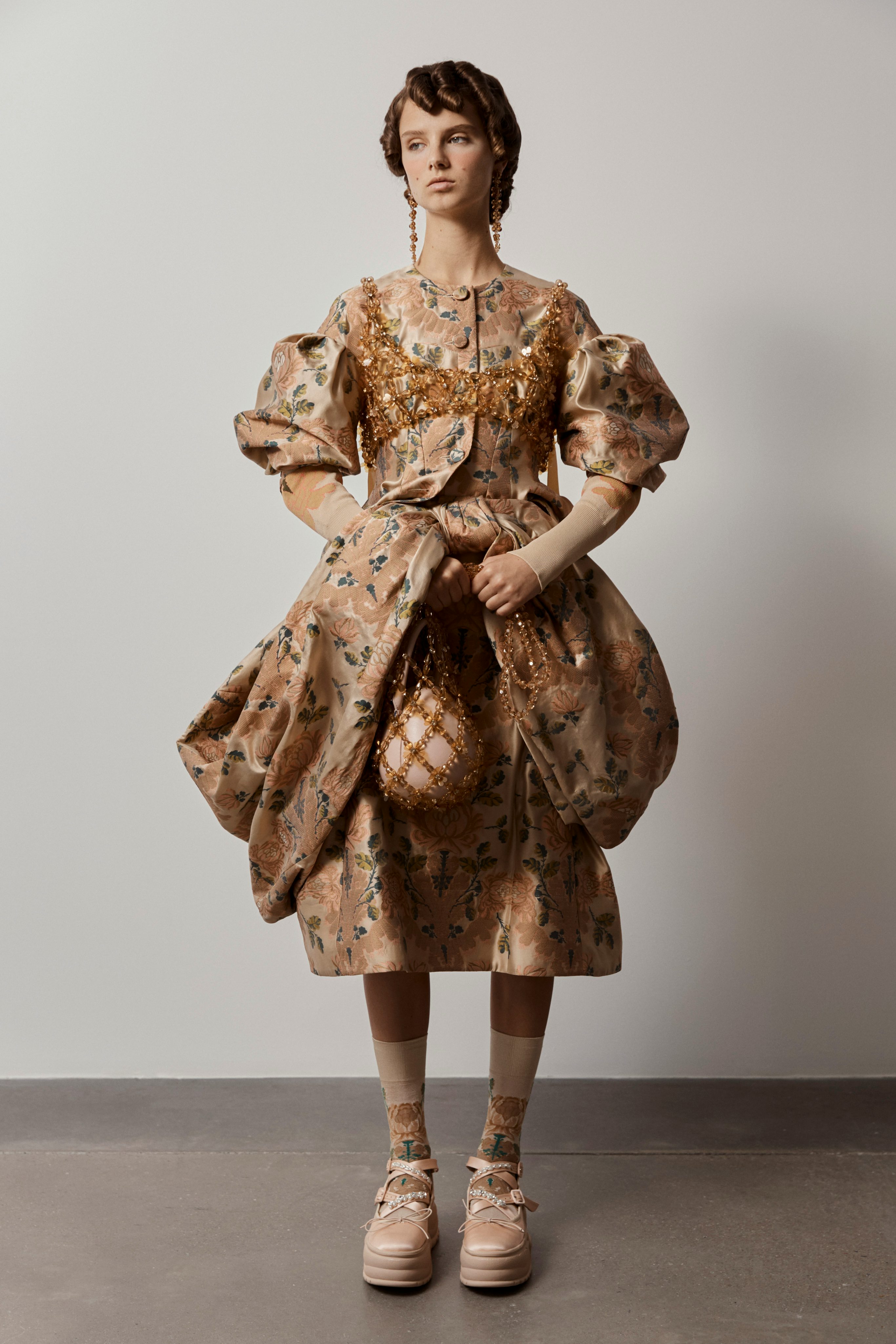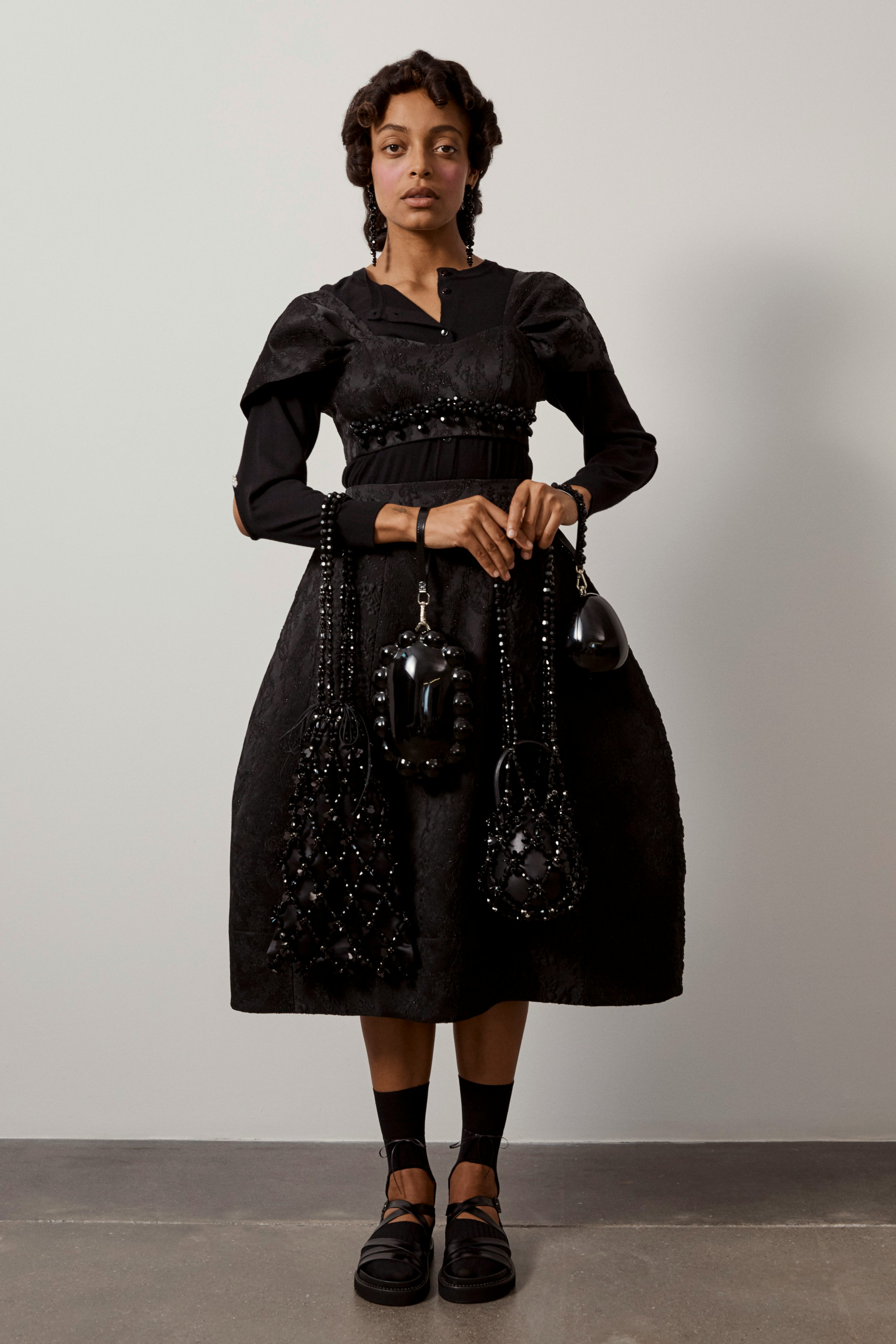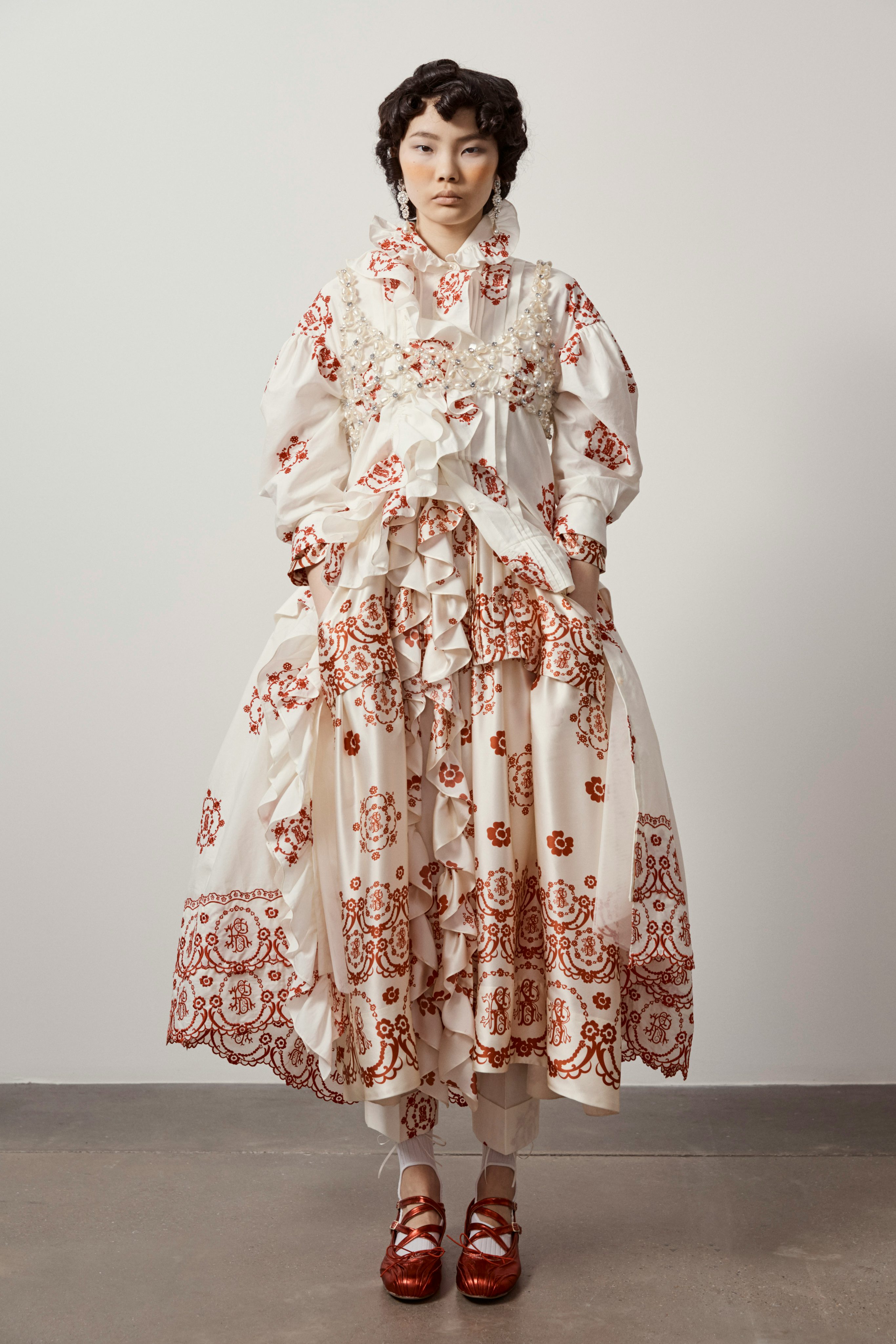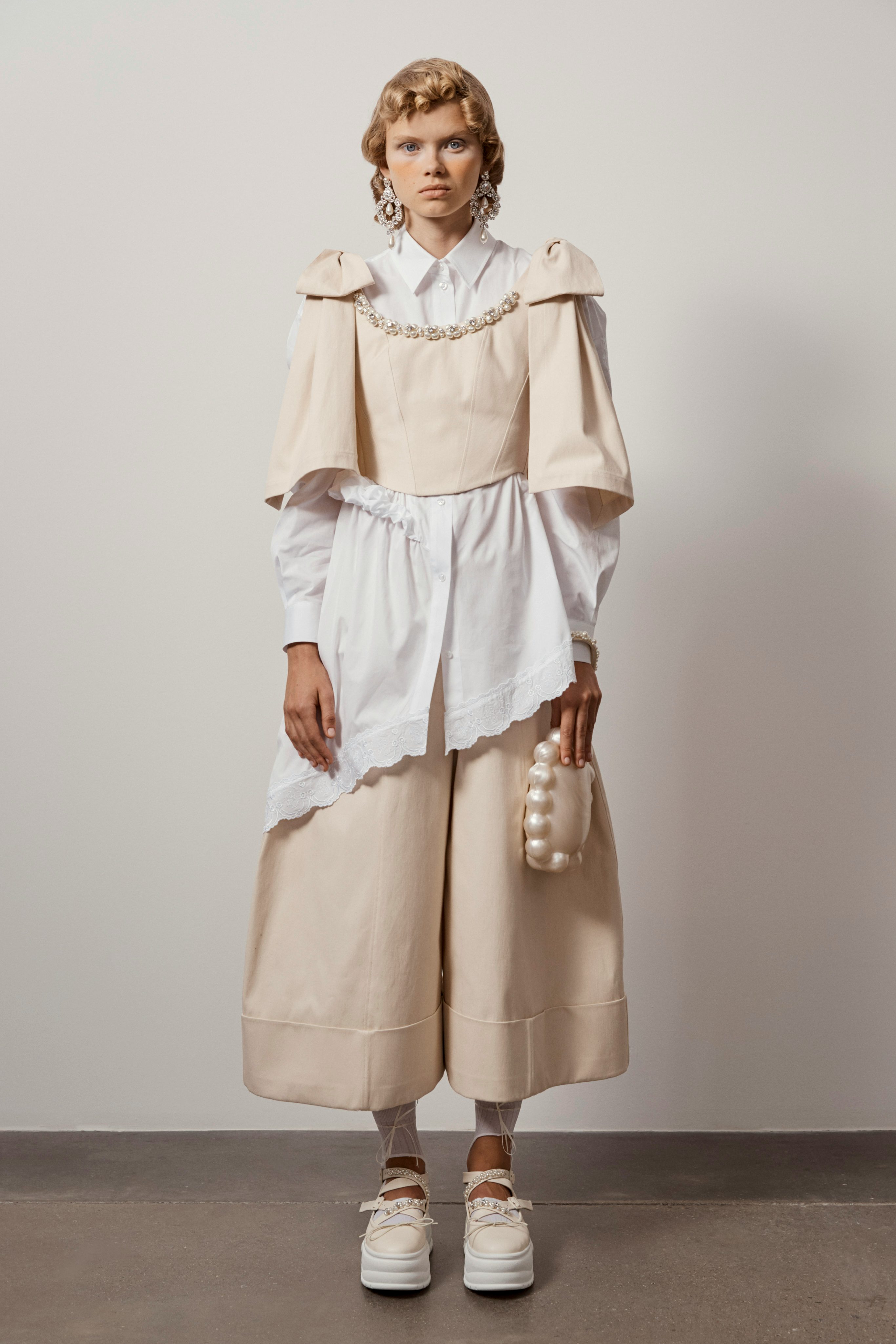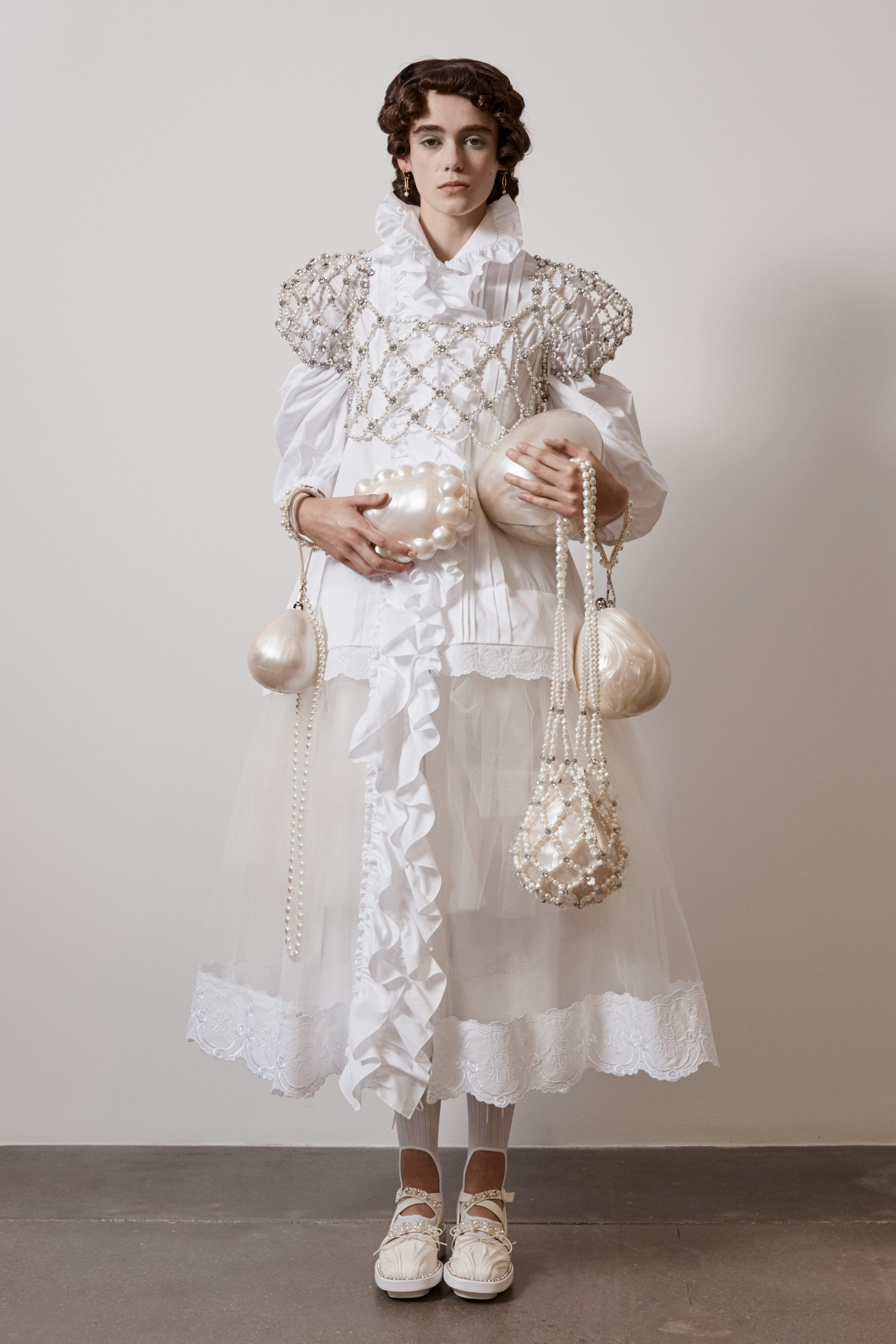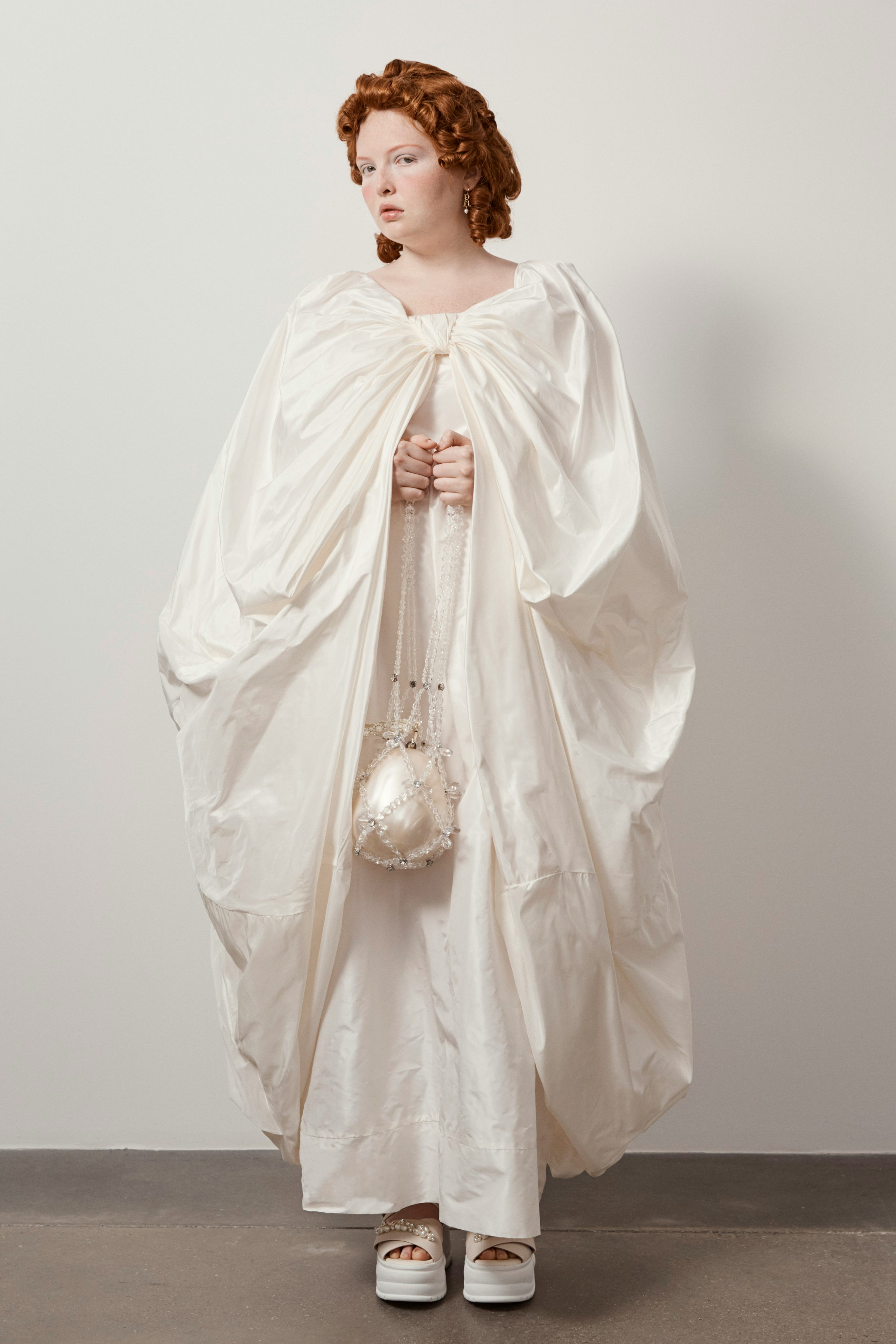Simone Rocha Reflects on Her 10th Year in Business | BoF Professional, Tim’s Take
LONDON, United Kingdom — Simone Rocha was on Zoom in the purest puff-sleeved white cotton top. There was a grosgrain ribbon in her jet black hair. Didja ever see such a digital vision of twisted innocence? This woman has a Celtic witchiness in her soul. “I used to think I was psychic when I was a child,” she said drily. Her last collection, pre-Covid, was saturated with a sense of mourning. Inspired by Irish poet J.M.Synge’s “Riders to the Sea,” it was all about the losses in an Irish fishing village, the fathers and brothers drowned in the course of their work. “It felt so relevant,” she mused. “On the day of the show, Storm Ciara was coming to a head.” And then came the pandemic, and all of us experienced a similar sense of elemental vulnerability. “I feel I had my apocalyptic indulgence,” said Rocha. “Now this was a real ‘cut the bullshit’ moment. So the new collection needed to be a reflection of something stepping forward, not looking back.” That’s why she used humble fabrics – cotton drill, poplin, a sober navy silk poplin – to balance the ornate brocades and taffeta. Creating friction, tension…
“I will admit it is still a little bit ominous,” Rocha conceded. Foreboding comes naturally to her. “I’ve always been aware of a darker space around the corner. It’s always an influence because I think that’s life.” But this particular darker space was obviously a completely unanticipated challenge. She was immediately gripped by a sense of commitment, to her studio, her team, her retailers, the entire community that evolves around a designer like her, a designer with a steadily intensifying following. Hence, the 30-look collection she showed on Saturday at the Hauser & Wirth gallery. “I love a show, I’m lamenting not having one,” Rocha admitted. “But I wanted to be able to show this collection in a very stark space, to have these pieces in the room as a vision of light.”
Once the pandemic hit in March, Rocha’s studio went home, worked remotely. Physical, but apart. “Everyone’s part needed to sing,” she said. “I felt more like a conductor, almost making a new identity. It was almost more transparent. Even though we were apart, it was all about the physical work that everyone puts into the collection. Every single conversation was really focused, whether it was about embellishment or inspiration. Nothing was frivolous.”
And yet there is a wantonness in the collection. How startling to see bondage goddess Bettie Page on the mood-board supplied online, alongside Nell Gwyn, the bosomy mistress of King Charles II. Rocha claimed an interest in the way that women’s bodies were historically depicted, how they were exposed in different ways at different times. That highlighted the peculiar propriety in her own designs, the way that sheer fabrics hinted at erotic revelation. “Erotic? No, provocative,” she countered. “Showing some things that make your skin tingle. You should feel it.” It’s an idea she’s pursued since her very first collection, the one with the tulle tailoring, and its fetishistic paradox, comfort and provocation, is something that is hardly ever acknowledged in Rocha’s work. “The power of seduction is important because it reveals strength when you’re making work about femininity. That’s the reality today. Women are female and strong.”
I was immediately curious. How did a woman with such a specific look – romantic, voluminous, Gothic, eerie – adjust her aesthetic for the New Abnormal? “I didn’t feel panicked, there was an earthy reality which was slightly Celtic,” said Rocha. “Humbling and humanising, but exhilarating too. I really wanted it to feel like me, my identity. How can it be significant? How, when we look back in ten years at this collection that was made in a pandemic, will it feel completely authentic to all the people who worked on it?”
“I believe it’s our job as designers to find another way to share your identity, your emotion, your clothes, make this place in your time right for you,” she added. The idea of identity infiltrated the collection. “You know how old tea-towels have initials embroidered in red on the corner? I was thinking how to use my initials without it feeling like a Fendi monogram so I hid it in a lace.” When I suggested that the effect was ecclesiastical, Rocha laughed. “It’s my Catholicism. But it’s very forceful because it’s part of a uniform, and I’ve always been drawn to those textiles.”
Mulling over the pandemic’s specific influence on the collection, she came up with this. “I don’t know if I’d have been as drawn to sobering fabrications for Spring/Summer, but there’s a weight to it. I feel like it’s affected the shape.” Shape was indeed the story: sober fabrics, exploded silhouettes. Bulbous hips, underwear as outerwear, bras and harnesses “trapping looks that were getting away with themselves,” said Rocha. “Push and pull, that’s what people are feeling, and me too. Things were shattered for people in different ways.” She talked about picking up the pieces, patchworking together a brocade, a tapestry, a cloqué, things that were fragile on their own but strong together. You could feel that same sense of security in the huge panniers that cocooned bodies like gilded scarab wings, or the big egg shapes in which a body could hibernate. Maybe also, in a completely different way, with cotton poplin pyjama looks, and even with the castle that was the collection’s major hand-embroidered motif.
Rocha insisted the castle was “a faraway place, an escape from doom and gloom.” During lockdown, she encouraged her four-year-old daughter Valentine to draw her dreams. She came up with a castle. In the big old dusty book of 18th-century embroidery and wallpapers and old fabrics that she keeps for reference, Rocha found that castle’s counterpart. But castles are symbols of defence and protection too, however delicately they might be rendered. Rocha acknowledged that she was looking for “comfort and security in the extreme”.
She could scarcely have anticipated a more difficult scenario for her tenth year in business. “I haven’t been critiqued or challenged like this since Louise Wilson at Saint Martin’s,” Rocha said ruefully. “But these issues are real. People still have to eat, sleep, dream, get dressed. It’s our challenge to see how you can do it in a way that feels right.” She certainly hasn’t compromised with her response.
The images in this review, courtesy of Simone Rocha, are not the full Simone Rocha Spring/ Summer 2021 collection.

